What is a Waldorf School and Does the Child Need to Go to One?
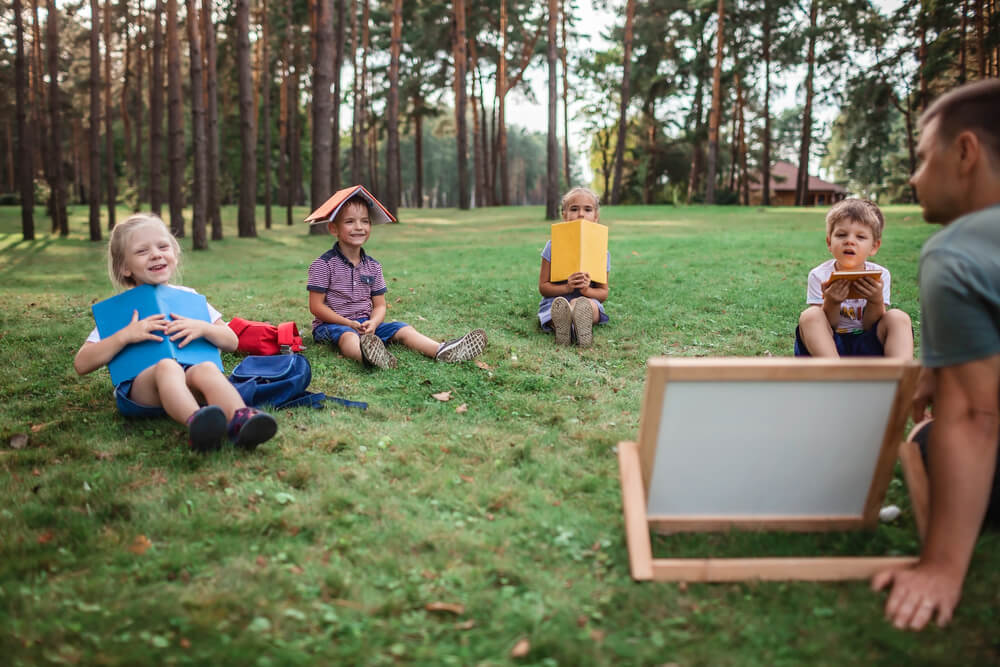
Since the founding of their first school, the Waldorf teaching method has won over a large number of people, but, at the same time, has received a lot of critiques. One of the most controversial teaching systems today is gaining popularity and attracting the attention of parents of future schoolchildren. Let’s talk about the basic principles of education in Waldorf schools and kindergartens, as well as the way the educational process is organized and the reasons for its popularity.
Contents:
- A Few Words on Waldorf Education
- Waldorf Schools in the U.S.
- Famous Graduates of Waldorf Schools
- Waldorf Kindergartens
- Using the Principles of Waldorf Education in Other Schools and Kindergartens
- How to Incorporate Waldorf Principles at Home: Tips for Parents
A Few Words on Waldorf Education

Pressmaster/Shutterstock.com
The first Waldorf school was opened at the beginning of the twentieth century in Germany at the Waldorf Astoria factory, after which the system was named. An Austrian philosopher and teacher Rudolf Steiner, the founder of anthroposophy, a religious and mystical doctrine, which the author himself called “the science of the spirit”, was invited to become the head of this school.
The main difference of the Steiner school at that time was the complete equality of all students: neither the social status, nor the religion or the different mental abilities of the students mattered. When developing the principles of Waldorf pedagogy, Steiner was guided by the needs of children at different stages of their development. Let’s take a closer look at these principles.
The Main Concepts of Waldorf Education
Steiner outlined his ideas about child development and methods of upbringing and education in his book “The education of the child”, as well as in a course of lectures that he gave during his trip to England. These ideas formed the structural basis of the educational process in Waldorf institutions worldwide.
- A person is the combination of the Spirit, the Soul and the Body, to which correspond the thoughts, feelings and the will power. The educational process must contribute to the development of all these components.
- In addition to the physical body, Steiner distinguishes the etheric and astral bodies, as well as the “I”. At the age of about seven years old, an etheric body appears in a person, which is responsible for physical development, memory and fantasy. At the age of fourteen, the astral body appears, which is responsible for emotional maturation, abstract thinking and the freedom of thought. At the age of about twenty-one, the “I” is born, and a person enters a phase of self-development. It is believed that the educational process should not precede the birth of these entities in a child, hence, intellectual development is only possible upon reaching emotional maturity.
- Education in the first few years should take into account the concept of temperaments, until children learn to control the manifestations of their personality.
Teaching Methods in Waldorf Schools
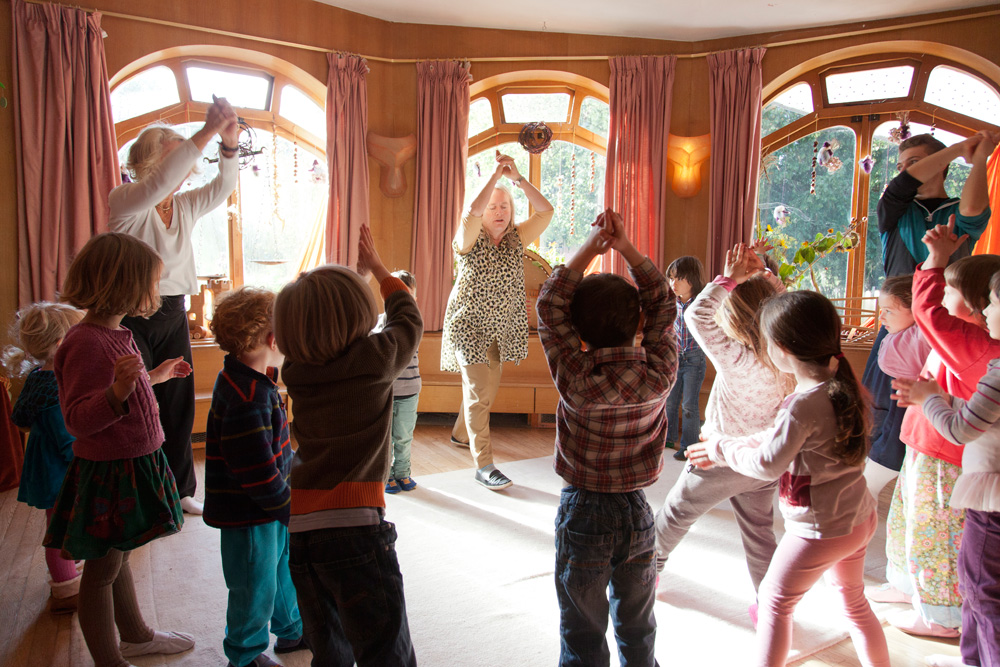
Credit: steinerwaldorf.org
A focus on the age characteristics and the needs of a child is at the heart of the methods used in Waldorf schools and kindergartens. These methods, which have won over many teachers and parents, serve one goal, which is the harmonious development of an individual.
- The Waldorf system is non-judgmental right up to the high school level: instead of the classical grading system, parents receive a detailed teacher’s report on the child’s progress.
- Textbooks are not used in the classroom: teachers present new material themselves, and students write down their notes. Nevertheless, various teaching aids are used in the classroom to retain the acquired skills.
- Teachers in Waldorf schools teach all the main subjects to one group of students over the course of seven years. The main goal of this approach is to create a trusting atmosphere in the classroom, as well as a personalized approach to each student. The teacher has great authority, as they diffuse the motivation to gain new knowledge.
- Basic skills, such as reading, writing, counting and others, are practiced regularly, while other disciplines are studied in periods of 3 to 4 weeks that go one after the other during the school year. Therefore, students have the opportunity to immerse themselves in a topic and study it in more detail.
- Each school day begins with the main lesson of two academic hours, which has a certain structure: a warm-up at the beginning (music/ reading poems), followed by a presentation and working on new material, and a discussion or a story from the teacher related to the lesson’s topic.
- The school schedule includes subjects such as gymnastics, shape drawing and eurythmy. Shape drawing is a subject taught in elementary grades that precedes writing, graphics, and calligraphy. Eurythmy was developed by Steiner himself and includes dance, music and the recitation of poems.
- The Waldorf method does not accept mechanical memorization of the material and seeks to shelter students from excessive strains. It is believed that new information is best retained with practical experience. Therefore, students practice handcrafts, learn to cook, decorate classrooms with crafts made from natural materials, work in the garden and take care of animals. High school students do volunteering work in schools, orphanages and nursing homes.
- A large role is given to creativity: students play a lot of music and draw, arrange regular concerts and celebrations. Parents are also actively involved in school activities.
Critiques of the Waldorf System

BalanceFormCreative/Shutterstock.com
Despite the obvious advantages of Waldorf pedagogy, for many parents and children (who would definitely want to go to school without grades!), the critics of this pedagogical system raise the following controversial points:
- The main disadvantage of the Waldorf system is considered to be lagging behind the generally accepted school curriculum in the first years of study. This is due to the fact that elementary school is the period when a child reaches emotional maturity, and thus, special attention is devoted to artistic and aesthetic development, instead of the basic subjects. For example, students of the Waldorf school write only in block letters until the third grade, while in a regular school this skill is worked on starting from the first grade.
- Some researchers attribute Steiner’s teachings to occult studies and observe the features of a religious sect in Waldorf educational institutions. Although anthroposophy is not taught to students, there are controversial points raised when researching this matter; for example, reciting prayers before meals and a full obedience to the authority of the teacher.
- Another important question that worries many parents is that can a person who was educated in a friendly, almost family environment, fully trusting and obeying their teacher in everything, enter adulthood without stress? The graduates of this system arguably may not be psychologically ready to make their own independent decisions in the future.
Waldorf Schools in the U.S.
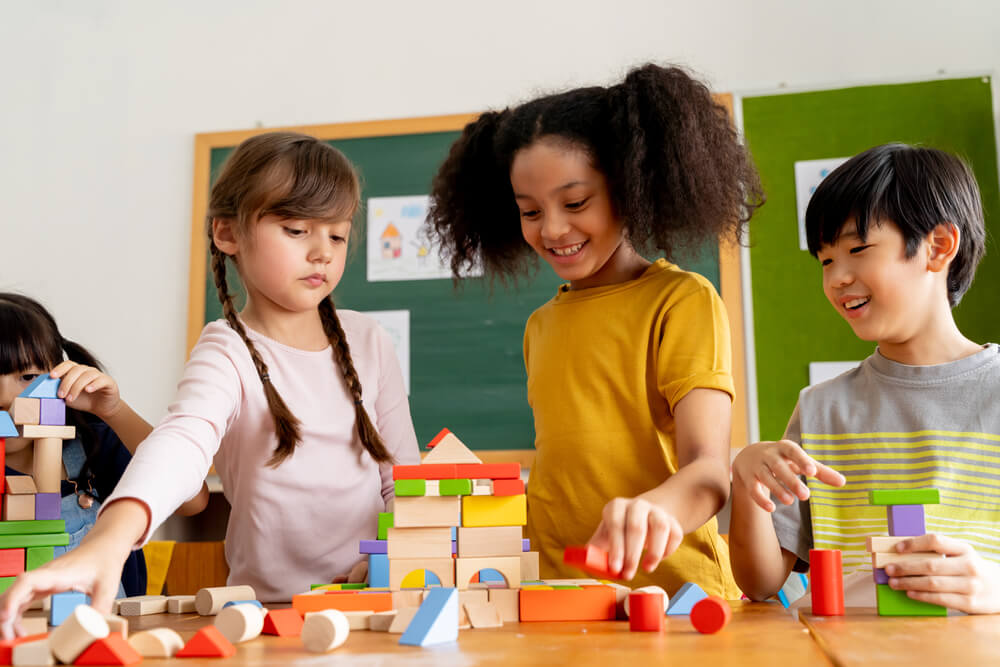
Twinsterphoto/Shutterstock.com
The first public school with Waldorf educational methods was opened in 1994 in California.
According to the data, there are currently close to 400 Waldorf schools and kindergartens in North America and more than 3000 in 70+ countries all over the world.
The establishments have their own association named AWSNA, which provides membership and accreditation to education institutions, despite not entering into their daily management.
Teachers joining a Waldorf school go through an educational program in special training centers. They study the pedagogical scripts of Rudolf Steiner, as well as learn more about the holistic approach and the visual performance arts and crafts.
Waldorf pedagogy is divided into three main stages.
- The early childhood stage, with a lot of imaginative play and discouraged use of gadgets.
- Elementary education is from 7 to 14 years old with school days including introductory activities of poetry, signing and others. Academic material is very often presented with the visual arts, movement, storytelling and crafts, and standard lessons are complemented by subjects such as nutrition, mineralogy, and astronomy.
- Secondary education starts at the age of 14 years old, by which the student ought to have an intellectual understanding, personal judgment and ethical values. The subjects are taught by specialist teachers and students are expected to take in abstract material and form their own judgments.
In order to continue receiving public funding, such schools need to demonstrate the performance of their students through standardized tests.
The majority of Waldorf schools are not free and quite expensive, with average prices ranging between $6000 per year for the 2-day nursery and $27000 per year for the high school.
Admission Into a Waldorf School
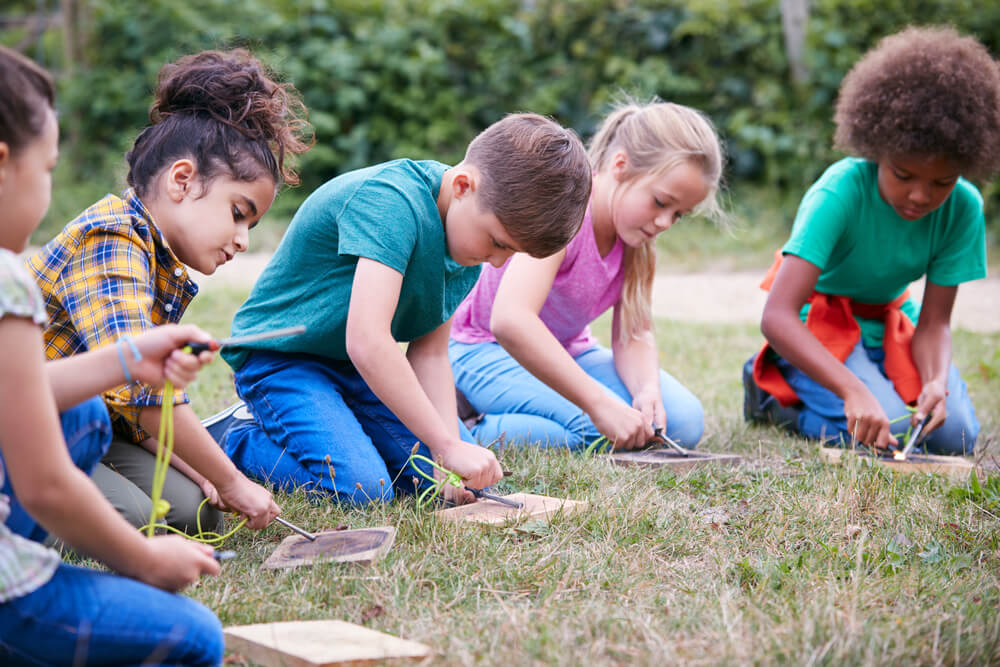
Monkey Business Images/Shutterstock.com
Admissions into the school are based on the results of an interview with the child and their parents. After the committee makes a positive decision, parents must provide a set of their child’s documents, as well as pay a deposit fee.
Due to the fact Waldorf schools are not omnipresent, it may sometimes be quite hard to get into one. Additionally, the establishment may also not be located close to the home and would require a daily car or bus ride.
Some of the schools offer a trial period that can range between two weeks and two months. Based on the results of the trial period, the school management may decide to expel the child.
Rules for Students
Waldorf schools have strict rules regarding gadgets: it is very often forbidden to use mobile phones, computers and tablets. The school website has a call times schedule, and parents can only call the child during their break.
Even if your child cannot pick up the phone, you can still make sure that they are safe. The Findmykids app makes it possible to listen to the sounds around the child and notifies whether they left their establishment.
Classes start at 8.30 am with some daily introductory activities, and end at around 3 pm, after classes and form drawing & eurythmy lessons for younger students.
Some of the schools offer weekend classes and activities with a focus on arts and crafts.
Is it Worth Sending Your Child to a Waldorf School: Advantages and Disadvantages

Halfpoint/Shutterstock.com
Each family certainly makes their own decision with regards to whether the Waldorf educational method is suitable for their family and their children. The main pros and cons of Waldorf education are presented in the table below:
| Advantages | Disadvantages |
| The school program is built according to the principles of Waldorf education, based on a holistic understanding and considering each child as an individual. | When switching to a regular school, the child may find it hard to adapt themselves to a classical educational system. |
| The program is split into pre-school, elementary school and high school. | The curriculum in a regular elementary school is widely different and is sometimes considered as “lagging behind”. |
| The approach to education is more well-rounded, and, often, more applicable to be used in the real world. | The system is sometimes accused of having similarities with religious sects due to the unity principles installed and certain esoteric notions used. |
| The schools are fully non-discriminatory and are suited particularly well for children that face problems with the classical educational program. | The level of skills obtained widely depends on the teacher and their inner motivation, as little textbooks are used, especially at a younger age. |
| The establishments have a “family-style” atmosphere that often allows for children to demonstrate better progress due to a comfortable atmosphere. | High tuition fees and the absence of complete availability of Waldorf schools in every state and every town make these schools reserved for a limited group of parents and pupils. |
| Parents receive detailed reports on the performance of their children and participate in the life of the school. | The vaccine opposition movement has been identified within the Waldorf community, in particular, the measles vaccine. |
| The very limited usage of gadgets allows one to fully focus on studying. | ⠀ |
⠀
Famous Graduates of Waldorf Schools
Among the graduates of Waldorf schools around the world are not just successful people, but also well-known entrepreneurs and famous actors and designers:
- Kenneth Chenot, businessman, former head of American Express;
- Wolfgang Porsche, head of Porsche cars;
- Michael Ende, writer;
- Thomas Maier, fashion designer;
- Lynn Ullmann, writer;
- William Lee Scott, actor;
- Sandra Bullock, actress;
- Jennifer Aniston, actress, and others.
Waldorf Kindergartens
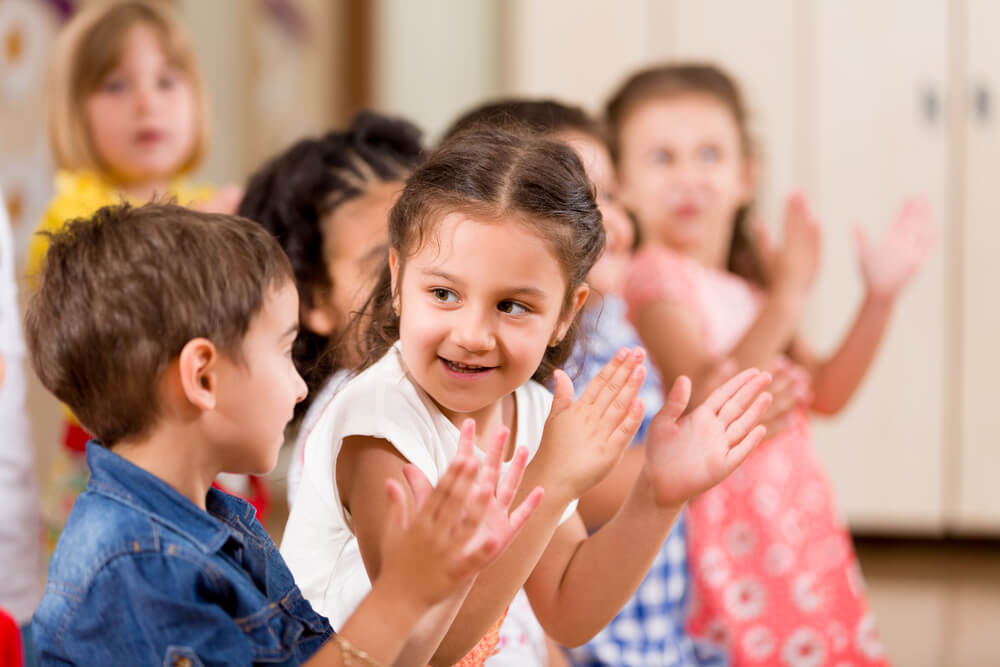
Fh Photo/Shutterstock.com
Since the founding of the first Waldorf kindergartens, these preschool institutions have become even more popular than schools: parents are happy to send their children to such an establishment because a friendly family environment is perfect for the natural development of the children of a preschool age.
As of today, there are in excess of 180 Waldorf kindergartens in the U.S. The principles of Waldorf pedagogy are applied not only in schools but also in preschool educational institutions for younger children.
Here are the main features of Waldorf kindergartens:
- A single group hosts children from 4 to 7 years old. Based on the principles of a family, the elders help the younger children.
- Education is based on imitation and leading by example: toddlers observe older children and the caregiver and learn to dress, clean up after themselves and engage in arts and crafts.
- All activities follow each other in a strict order, with active games alternating with calm activities.
- Particular attention is paid to the interior of the premises, which the children adorn on their own.
- The personality of the child and their desires lie at the core: the child can refuse to work with the teacher and play on their own.
- Free play is a key concept of Waldorf education. Free role-playing games develop fantasy and the ability for the child to express themselves.
- Toys used in kindergarten should be used to awaken the child’s imagination. Preference is to be given to homemade dolls made of cloth and straw, wooden cubes and doll furniture, clay toys and kitchen utensils.
- The prices at private Waldorf kindergartens are from $6000 up to $18000 per year, depending on the age group and the number of days that the child is enrolled for.
- The main problem faced by parents of Waldorf kindergarten graduates is that children are not taught to read, write and count; therefore, when planning admission to a regular school, parents will have to take care of the preparatory classes in advance.
Using the Principles of Waldorf Education in Other Schools and Kindergartens
Despite the fact that not every school can be called a Waldorf school, the basics of the Waldorf method of education and training can be applied in any educational institution.
The respect for the child’s personality, the desire to unleash their creative potential, the method of immersion and the emphasis on gaining practical experience are the main principles that some progressive schools successfully implement through project work, role-playing, science experiments and extracurricular activities.
In kindergartens, the methods of Steiner pedagogy are gaining popularity together with the methods of the Montessori system: children are involved in household activities, clay modeling, drawing and cooking. Bright plastic toys and wooden cubes and cylinders are placed on the shelves side by side. Playrooms are split into a few zones for every corner to have an option for the child to independently create some scenery for play.
How to Incorporate Waldorf Principles at Home: Tips for Parents

suebsakun piromraj/Shutterstock.com
Waldorf dolls
Educators and teachers of Waldorf educational institutions undergo lengthy training to master an extensive methodological base. However, some principles of Waldorf pedagogy can be implemented at home through the following advice:
- Try to say “no” to your child less often: leave this word only for serious cases. Allow your child to make their own choices in situations where this is acceptable.
- Stick to a daily routine: predictability is a very important factor for young children.
- Set an example: do not leave household chores for when the child is sleeping, but get them involved. If you cook together, dust and wash clothes, the child will have a clear idea of how valuable work is.
- Create an environment that will encourage imagination and fantasy in your home. Try to remove visual and sound stimuli, such as musical toys, bright plastic cars and so on. They overload the child’s nervous system and do not give them an opportunity to draw their own conclusion on the toy’s functionality.
- Minimize the use of gadgets: do not turn on the TV in the background, do not let the child watch too many cartoons and, of course, lead by example by putting the phone away and playing with the child or going on a walk together.
- Instead of bright dolls and cars, offer your child to play with toys made from natural materials, such as wooden pyramids and cubes in calm natural colors. A doll can be sewn together from scraps of fabric, yarn or felt according to these patterns. This will be a great activity for you and the child. For clay modeling, natural materials can be used. Clay can also be replaced with beeswax. Natural materials, natural dyes and the absence of sharp corners will make toys safe for children. Ready-made toys can be bought in specialized stores or on the Amazon website.
- Collect beautiful pebbles, acorns and pine cones during your walks: children love to play with them. Additionally, they can be used to teach counting.
- If you don’t have a country house, you can set up a small herb garden by your windows and take care of it together with your child.
- Learn short songs and interactive poems accompanied by games with finger, arms or leg movements of the child. Do not forget about finger games to develop the child’s fine motor skills and, of course, play outdoor games as much as possible.
In recent years, many teachers and scientists have been building hypotheses about what the school of the future should be in order to meet the needs of society and, most importantly, the students themselves. This model has much in common with the ideas of Rudolf Steiner that originated more than a hundred years ago, with the principles of a personalization of education, the desire to reveal the talents of each student, the mentoring role of the teacher, and the acquisition of practical skills in various areas.
Today, the need to reform school education is very acute as students experience exorbitant workloads and are forced to memorize a huge amount of educational material that is often not supported by practical usage. At the same time, the knowledge assessment system does not take the individual characteristics of children into account. Therefore, despite the critical comments, the Waldorf school does not have these shortcomings, which explains the growing popularity of this pedagogical system all over the world.
The picture on the front page: Maria Symchych/Shutterstock.com
Проверьте электронный ящик



















